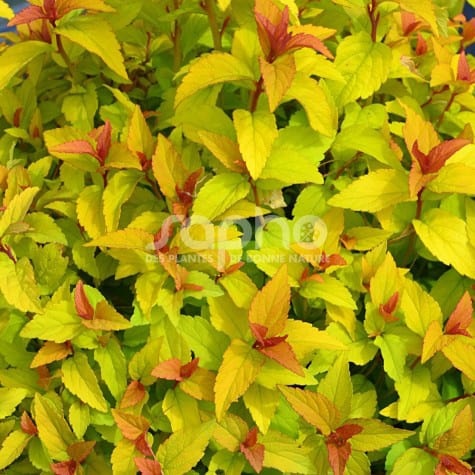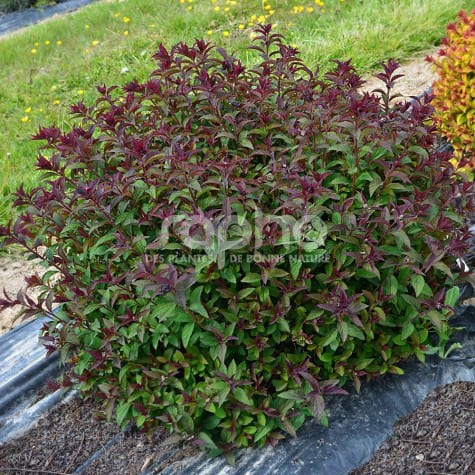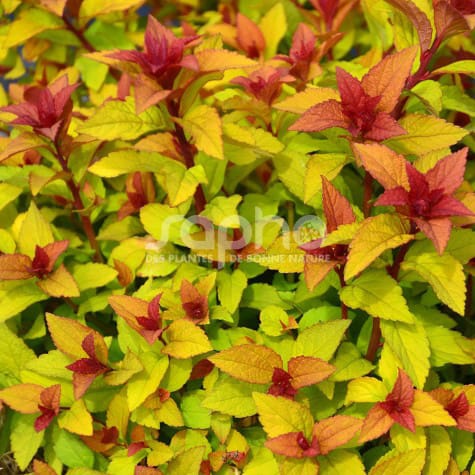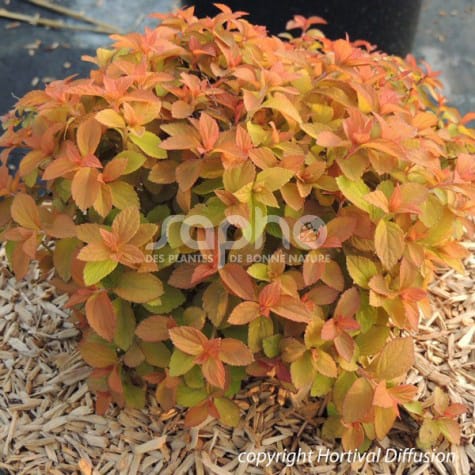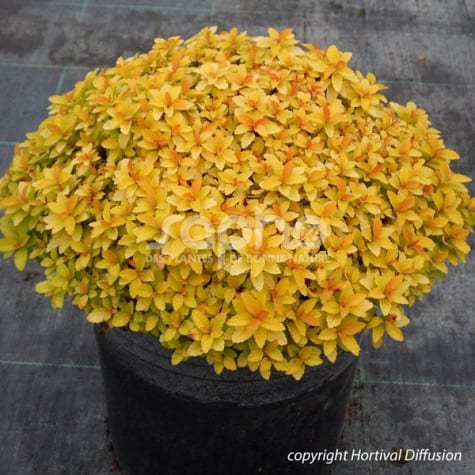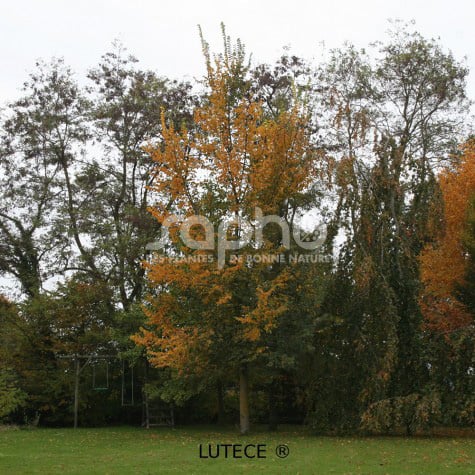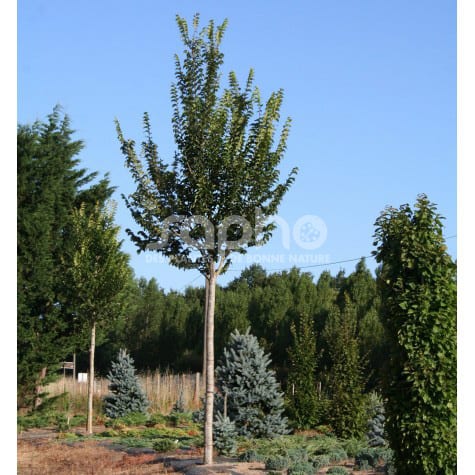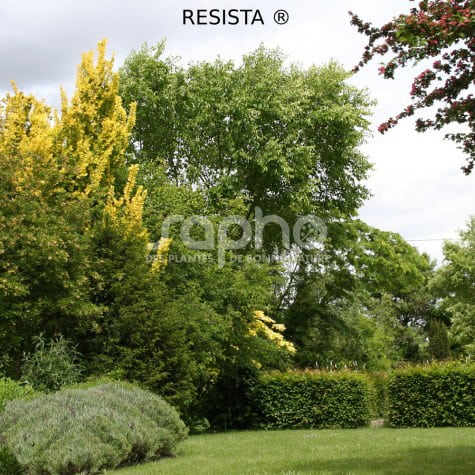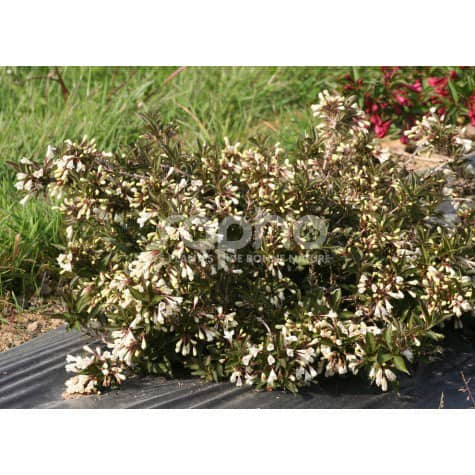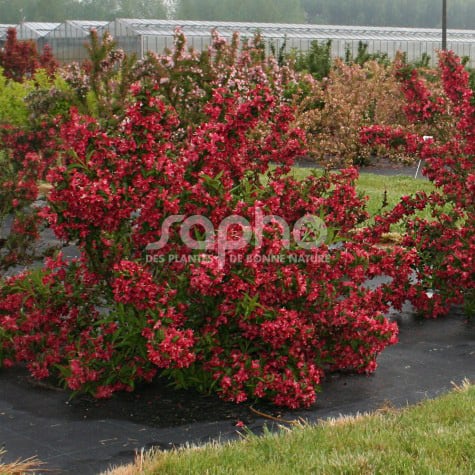A young bright red foliage, golden-yellow in summer, with an intense growth of dark pink flowersIn spring, the foliage of Merlo® Gold has a remarkable intensity, mixing young firey-red shoots and small lemon-yellow leaves. In summer the foliage remains yellow. It has a naturally round and regular habit. In June Merlo® Gold is covered with a multitude of small dark red flowers. Removing the first faded corymbs will encourage a second flowering. Resistant to powdery mildew, this new spirea will mix wonderfully in beds with other shrubs or colourfully-leaved perennials.
Filter By
Foliage
Position
Where to find Sapho plants ?
For young plants
You will find the names of Sapho-licensed nurserymen at the bottom of each variety sheet.
For available plants
Please ask your nursery suppliers.
Each licensed propagator is free to market his young plants to all his customers.
Categories
Menu
All our varieties
Young bright purple foliage, followed by intense carmine pink flowersIn spring the young shoots, at first bright purple red, then becoming darker, make a contrast with the overall green foliage. The serrated and subtly veined leaf blades stay purple for quite a while before changing to dark green. In the autumn they turn bronze. This selection is not very sensitive to powdery mildew. In June the plant is covered in carmine pink flowers reaching up to 8 cm. Taking off the first wilted corymbs favours renewed flowering right into September.Its regular round bushy growth is easy on the eye and its moderate dimensions make it a shrub which lends itself to be either pot grown, be in the foreground of a flower bed or in a border.
A young orange-red foliage, greeny-yellow in summer, with an intense growth of dark pink flowers
In spring, Merlo® Star's foliage is remarkably intense, combining young orange-red shoots and little golden-yellow leaves. In summer the leaves turn a bright greeny-yellow. Its habit is very compact and round. In June, Merlo® Star is covered with a multitude of little dark pink flowers. Removing the first faded corymbs will help re-flowering. Resistant to powdery mildew, this new spirea will mix wonderfully in beds with other shrubs or colourfully-leaved perennials.
Seductive caramel-orange foliage growing in the form of an inviting cushionThe Spiraea japonica Zen'Spirit® Caramel is a small bush with a compact habit that forms dense, rounded cushions. This new variety is notable for its young caramel-orange foliage that persists for several weeks in spring before turning green. Pruning will encourage a repeat performance. In autumn the foliage develops beautiful red tints. Its flowering is typical of Japanese Spiraea: in summer the bouquets of flowers in purple-pink corymbs emerge above the foliage. Once well-established, it tolerates brief periods of drought and a little lime. Zen'Spirit® Caramel is an easy plant that requires limited attention. It grows to a limited height (40 to 60 cms). Its restrained development makes it ideal for rockeries, flowerbed borders, terraces, low hedges or tubs.
A delightful small cushion of golden yellow foliageThe Spiraea japonica Zen'Spirit® Gold is a shrub of limited development and highly compact habit. In spring, its foliage is a beautiful luminous gold that persists throughout the summer. Freely branching with a delicate wood, this Spiraea forms a dense and colourful, spreading cushion. The flowers are very discrete. It's a plant that's appreciated above all for its foliage and its decorative form adapted to small spaces, borders or pots.
Resistant to the Dutch elm disease, our towns and countryside have found the elm again.
Tested by INRAE, this hybrid is the result of cross fertilization of six French varieties, plus an English and a Chinese one. It is resistant to the Dutch elm disease. Its bark is smooth. The leaves are quite similar to the common elm tree: asymmetrically toothed, with a rough underside. The deep green foliage is dense. In the autumn it has a beautiful golden yellow tint. In March, before the leaves, grow discreet flowers in the shape of little red globules without petals. Its slender trunk gives LUTECE® a perfect aptitude for a high-stem training, better than Ulmus RESISTA® 'Sapporo Gold'; growing naturally its habit is regular and homogeneous. It also makes a very good shrub. It is fast growing. Perfectly adapted to landscape hedges, this cultivation is equally interesting planted in groups on an embankment for example, but also as individual tree or grown in line if it has been grown as a full standard. The name of LUTÈCE® was given to it in recognition of the help provided by Parks and Gardens Department of the city of Paris for having taken care of a field of experimentation in the Vincennes Park.
Excellent alignement tree resistant to Dutch Elm Disease.
Selected, tested and compared by INRAE, notably in a plantation in the Vincennes forest in Paris since 1983, this elm selection shows a good resistance to Dutch Elm Disease, and this without suffering damage through other agents, such as insects, pathogenes fungi or summer drought. The strong green foliage honeycombed, toothed and well veined is similar to the indigenous European elms. It is of upright growth, slimmer and higher than LUTECE®. VADA® has all the qualities of an excellent alignment tree, or planted individually.
For a country style hedge resistant to Dutch Elm Disease.
Natural hybrid between Ulmus pumilla and Ulmus davidiana var japonica, first discovered in the Sapporo Botanical Gardens, RESISTA® has undergone many tests by INRAE and the Service for the Protection of Plants. It has revealed to be resistant to the Dutch Elm Disease, which has ravaged the elms in our towns and countryside.
A very vigorous tree, it can reach 20 m high and 6 m wide in good growing conditions. It is slightly smaller than our traditional elms.
Its light green foliage turns golden yellow in autumn.
The first elm to be resistant to Dutch Elm Disease, it goes well in country style hedges without resembling the Ulmus glabra.
Small shrub with surprising contrasts: white flowers on dark foliage.This new variety, resulting from crossbreeding carried out by INRAE in Angers, is valued for its compact and dwarf form and for the contrast between its dark foliage and white flowers. BLACK AND WHITE® is the first Weigela variety with these remarkable characteristics.Of medium growth with very short internodes, this shrub stays within small dimensions.The deciduous dark green leaves gradually develop a pretty purple colouring through the seasons.In May - June, the ends of the branches are covered in bouquets of pure white trumpet- shaped flowers with a very attractive tapered purple-red base, a delicate reminder of the colour of the young leaves.BLACK AND WHITE® should be planted in pots or in small borders, together with perennials and low shrubs. It prefers a sunny position, but tolerates light shade.Trophies: Bronze Medal at PLANTARIUM 2009 (Boskoop - NETHERLANDS)
Ideal for small spaces.
NAIN ROUGE® is very original due to its truly compact shape: it grows into a round bush, 0.80 to 1 m high and wide. The foliage is elongated and wavy and is very attractive in autumn when it turns bright red.The flowers in May - June are bright red and have prominent marks and white stamens, which contrast well with the colour of the petals.Its small dimensions are an asset: grown in pots, rockeries as bed edging plants... in small gardens, but also in large groups as ground cover in public gardens.

